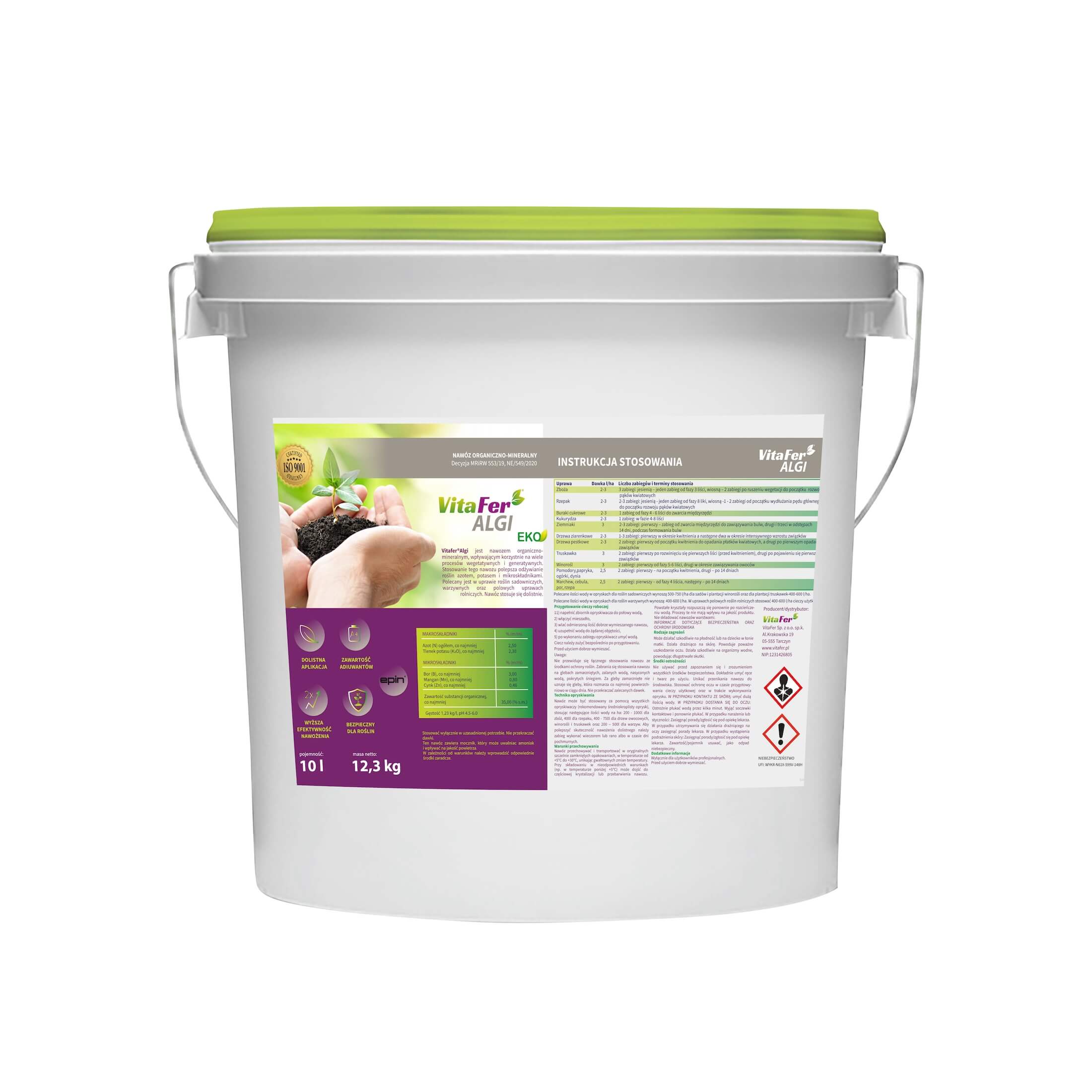Description
Recommendations for use:
– To increase resistance to stress conditions (e.g. frosts during flowering or extremely high temperatures during fruit or pod ripening)
– As a preparation to encourage bees to pollinate flowers due to the specific properties of iodine, a hormone component contained in the product.
– To stimulate the flower production process and as a preparation to extend pollen viability, reduce pod breakage in oilseed rape and legumes.
– To inhibit lateral shoot pressure (recommended especially in orchards)
– For regeneration purposes after phytodamage or pest or disease pressure in any orchard or field crop.
– To increase resistance to biotic stresses caused by pest activity and fungal diseases.
– To improve the quantity and quality of the crop and improve the storage properties of fruit and vegetables.
– To increase the effectiveness of many plant protection products or reduce the need for their use.
| MACROELEMENTS | % weight | % volume |
|---|---|---|
| Nitrogen (N) | 2.50 | 3.08 |
| Potassium (K2O) | 1.50 | 1.85 |
| Sulfur (SO3) | 0.20 | 0.25 |
| Calcium (CaO) | 0.14 | 0.17 |
| MICROELEMENTS | % weight | % volume |
| Boron (B) | 3.000 | 3.690 |
| Copper (Cu) | 0.003 | 0.004 |
| Iron (Fe) | 1.630 | 2.006 |
| Manganese (Mn) | 0.800 | 0.984 |
| Zinc (Zn) | 0.500 | 0.615 |
Dosage and timing of application:
| Crop | Dose (l/ha) | Number of Treatments and Application Timing |
|---|---|---|
| Cereals | 2-3 | 3 treatments: In autumn – one treatment from the 3 leaf stage, in spring – 2 treatments after the start of vegetation until the beginning of earing (BBCH 31-50) |
| Oilseed Rape | 2-3 | 2-3 treatments: In autumn – one treatment from the 6-8 leaf stage, in spring – 1-2 treatments from the beginning of main shoot elongation just after winter rest until the beginning of flower bud development (BBCH 30-52) |
| Sugar Beet | 2-3 | 1 treatment from the 4-6 leaf stage to canopy closure (BBCH 16-39) |
| Maize | 2-3 | 1 treatment: At the 4-8 leaf stage (BBCH 14-18) |
| Potatoes | 3 | 2-3 treatments: First treatment from canopy closure to tuber setting, second and third treatment at 14-day intervals during tuber formation (BBCH 31–40) |
| Pome Trees | 2-3 | 1-3 treatments: The first at flowering and the next two during the period of intensive growth of primordia |
| Stone Trees | 2-3 | 2 treatments: The first from the start of flowering until flower petal fall (BBCH 51-69) and the second after the first pod fall (BBCH 69-81) |
| Strawberry | 3 | 2 treatments: First after start of vegetation but before flowering (BBCH 10-49), second: from first bud burst to fruit setting (BBCH 60-81) |
| Vine | 3 | 2 treatments: First from the 5-6 leaf stage until bud burst (BBCH 14-55), second during fruit setting until the end of fruit development (BBCH 71-89) |
| Tomatoes, Capsicum, Cucumbers, Pumpkin | 2.5 | 2 treatments: First at the beginning of flowering (BBCH 40), second after 14 days |
| Carrots, Onions, Leek, Turnip | 2.5 | 2 treatments: First from the 4 leaf stage (BBCH 14-16), next after 14 days |
Recommended spray volumes for orchard crops are 500-750 l/ha for orchards and vine plantations and 400-600 l/ha for strawberry plantations.
The recommended spray volumes for vegetable crops are: 400-600 l/ha. In agricultural field crops, apply 200-400 l/ha of spray liquid.
Fertilisation by fertigation systems: for all crops, apply a 0.25% solution at the time of intensive growth.






